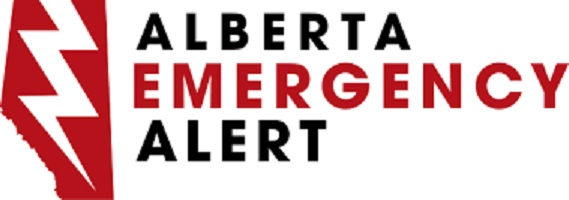Economy
Economists miss the point about the carbon tax revolt

From the Fraser Institute
An open letter is circulating online among my economist colleagues aiming to promote sound thinking on carbon taxes. It makes some valid points, and will probably get waved around in the House of Commons before long. But it’s conspicuously selective in its focus and unfortunately ignores the main problems with Canadian climate policy as a whole.
There’s a massive pile of boulders blocking the road to efficient policy. They have labels such as “Clean Fuel Regulations,” the oil and gas sector emissions cap, the electricity sector coal phaseout and “net-zero” requirements, strict energy efficiency rules for new and existing buildings, new performance mandates for natural gas-fired generation plants, the regulatory blockade on liquified natural gas export facilities, new motor vehicle fuel economy standards, caps on fertilizer use on farms, provincial ethanol production subsidies, electric vehicle mandates and subsidies, provincial renewable electricity mandates, grid-scale battery storage experiments, the “Green Infrastructure Fund,” carbon capture and underground storage mandates and subsidies, subsidies for electric buses and emergency vehicles in Canadian cities, new aviation and rail sector emission limits, and many more.
Not one of these occasioned a letter of protest from Canadian economists.
In front of that mountain of boulders there’s a twig labelled “overstated objections to carbon pricing” and at the sight of it hundreds of economists have rushed forward to carry it off the road. What a help.
To my well-meaning colleagues I respond that the pile of regulatory boulders long ago made the economic case for carbon pricing irrelevant. Layering a carbon tax on top of current and planned command-and-control regulations does not yield an efficient outcome, it just raises the overall cost to consumers. Which is why I can’t get excited about the carbon-pricing letter. That’s not where help with the heavy lifting is needed.
My colleagues object to exaggerated claims about the cost of carbon taxes. Fair enough. But far worse are exaggerated claims about the economic opportunities associated with the so-called “energy transition” and benefits of reducing carbon dioxide emissions. Some of the latter are traceable to poor-quality academic research, such as the continued use of the RCP8.5 emissions scenario long after it has been shown in the academic literature to be grossly exaggerated, or use of impacts estimates from climate models known to have large persistent warming biases. But a lot of it is simply groundless rhetoric. Climate activists, politicians and journalists have spent years blaming Canadians’ fossil fuel use for every bad weather event that comes along and swinging “climate emergency” declarations and other polemical cudgels to shut down rational debate. Again, none of this occasioned a cautionary letter from economists.
There’s another big issue on which the letter was silent. Suppose we did clear all the regulatory boulders along with the carbon-pricing-costs-too-much twig. How high should the carbon tax be? A few of the signatories are former students of mine so I expect they remember the formula for an optimal emissions tax in the presence of an existing tax system. If not, they can take their copy of Economic Analysis of Environmental Policy by Prof. McKitrick off the shelf, blow off the thick layer of dust and look it up. Or they can consult any of the half-dozen or so journal articles published since the 1970s that derive it. But I suspect most of the other signatories have never seen the formula and don’t even know it exists.
Because if they did, they would know that a major obstacle to emission reductions in Canada is our tax burden. The costlier a tax system, the lower the marginal value of emission reductions and the lower the optimal carbon tax rate. Based on reasonable estimates of the social cost of carbon and the marginal costs of our tax system, our carbon price is already high enough, and probably too high. I say this as one of the only Canadian economists who has published on all aspects of the question. Believing in mainstream climate science and economics does not oblige you to dismiss public complaints that the carbon tax is too costly.
Which raises my final point: the age of mass academic letter-writing has long since passed. Academia has become too politically one-sided. Universities don’t get to spend years filling their ranks with staff drawn from one side of the political spectrum then expect to be viewed as neutral arbiters of public policy issues. As such, the more signatories on letters like this the less impact it will have. People nowadays will make up their own minds, thank you very much, and a well-argued essay by an individual willing to stand alone will likely carry more weight.
Online conversations today are about rising living costs, stagnant real wages and deindustrialization. Even if carbon pricing isn’t the main cause, climate policy is playing a growing role and people can be excused for lumping it all together. The public would welcome insight from economists about how to deal with these challenges. A mass letter enthusing about carbon taxes is no substitute.
Author:
Business
Is affirming existing, approved projects truly the best we can do in Canada?

From Resource Works
For major projects, what is old is new again
Prime Minister Mark Carney’s second wave of “nation-building projects” sounds transformative: six new energy and mining proposals, plus a northern corridor, added to the first tranche unveiled in September, and included in the freshly passed federal budget for the fiscal year.
Together, Ottawa says, they amount to more than $116 billion in investment and are central to “realizing Canada’s full potential as an energy superpower.” That is the pitch in the federal news release.
Look closely, though, and a different picture emerges. For major projects, what is old is new again. Almost every file now being “fast-tracked” was already on the books, sometimes for a decade or more.
The new referrals to the Major Projects Office (MPO) are all familiar: the Nisga’a-led Ksi Lisims LNG terminal on B.C.’s north coast; BC Hydro’s North Coast Transmission Line; Canada Nickel’s Crawford project near Timmins; Nouveau Monde Graphite’s Matawinie mine north of Montréal; Northcliff’s Sisson tungsten project in New Brunswick; and the Inuit-owned Iqaluit Nukkiksautiit hydro project in Nunavut. The “Northwest Critical Conservation Corridor” in B.C. and the Yukon is added as a long-range concept.
Long timelines and longstanding obstacles
None of these is a fresh idea. As the Globe and Mail notes in a project-by-project rundown, Ksi Lisims has been in development for years and already faces two Federal Court challenges from nearby First Nations and opposition from Wet’suwet’en hereditary leaders who fought Coastal GasLink. The North Coast Transmission Line was identified in 2023, with B.C. legislation to fast-track it and term-sheet co-ownership deals with First Nations already in place. The Sisson mine has been stalled at the pre-construction stage for more than a decade, despite earlier approvals and new public money to update its feasibility study.
Iqaluit hydro is hardly a novelty either. As Globe reporting shows, dam concepts near the city have been studied since the mid-2000s, with the current Inuit-owned proposal building on that earlier work and backed by federal engineering funds. The Crawford nickel project was acquired in 2019 and has spent years lining up investors and a complex financing stack, documented in both CBC and Financial Post coverage. Matawinie received its Quebec authorization in 2021, has an impact-benefit agreement with the local Atikamekw Nation and now enjoys federal price-floor guarantees on graphite.
The first tranche, announced in September, follows the same pattern. LNG Canada Phase 2 in Kitimat, new nuclear at Darlington, Contrecoeur container capacity at the Port of Montréal, McIlvenna Bay in Saskatchewan and the Red Chris expansion in B.C. were all in various stages of planning long before Carney entered office. The MPO is not inventing a new project pipeline; it is trying to accelerate the one Ottawa already had.
Acceleration is the point — and industry welcomes it
Acceleration is, to be fair, the point. The Calgary-based MPO, led by former Trans Mountain head Dawn Farrell, is designed to run permits in parallel, not one after another, and to coordinate financing through bodies like the Canada Infrastructure Bank and Canada Growth Fund. Farrell told CBC that work which might have taken “five or six more years” could be cut to roughly two. In a country where large projects regularly die of regulatory exhaustion, that is significant.
Industry likes the signal. Canada Nickel CEO Mark Selby says MPO referral “puts us in the fast lane,” even without the more controversial “national interest” label in Bill C-5 that would allow cabinet to set aside parts of the Fisheries Act, Species at Risk Act or Impact Assessment Act. Inuit proponents of the Iqaluit project welcome Carney’s description of their hydro plan as a breakthrough for Arctic sovereignty, replacing millions of litres of diesel.
But a superpower strategy this is not
Still, if this is what becoming an “energy superpower” looks like, it is a modest start.
Notably absent from Carney’s list is any new oil pipeline. Alberta Premier Danielle Smith has spent months pushing a concept for a bitumen pipeline from the oil sands to the northern B.C. coast, doing provincial groundwork in the hope a private proponent will one day take it over. A BBC report sets out the feud with B.C. Premier David Eby, who dismisses the idea as “fictional” and “political” and insists no company wants it, accusing Smith of jeopardizing B.C.’s LNG ambitions. Smith has called that stance “un-Canadian.”
Western frustration is growing. In the National Post, Whitecap Resources chief executive Grant Fagerheim warns of “fury from Alberta and Saskatchewan” if a pipeline to tidewater is never prioritized and argues producers are tired of a U.S.-dominated system where Canadian barrels sell at a discount while others capture the margins. He favours an energy corridor carrying oil, gas, power and rail, not just more rhetoric about nation-building.
Northern ambitions lag behind rhetoric
Another gap is the North. The Indigenous-led Arctic Gateway partnership, Manitoba and Ottawa are already spending heavily on the Hudson Bay Railway and planning new storage and loading systems to expand the Port of Churchill for grain, potash, critical minerals and Arctic resupply. Carney talks up a “huge host of opportunities” in northern Manitoba, but Churchill sits only on the MPO’s lower-profile “transformative strategies” list, with a full plan now pushed out to 2026.
Meanwhile, the one project that has fundamentally shifted Canada’s oil export position is the long-delayed Trans Mountain expansion. As Resource Works points out, TMX now sends diluted bitumen from Burnaby to Asia, shrinking the old “captive discount” and giving Canada genuine leverage in global markets. But TMX predates Carney’s government by more than a decade and only exists because Ottawa nationalized a struggling private pipeline to get it built.
Evolution, not revolution
Carney’s major-projects push is real, and for the companies involved, the prospect of faster permits and clearer federal backing is very good news. Yet for a government that talks about mobilizing a trillion dollars and remaking Canada as an energy superpower, the current list is evolutionary rather than revolutionary. For now, Ottawa is mostly trying to build what was already on the drawing board. The tougher choices on pipelines, ports and interprovincial trade still lie in front of it.
Headline photo credit to THE CANADIAN PRESS/Adrian Wyld
Business
Taxpayers paying wages and benefits for 30% of all jobs created over the last 10 years

From the Fraser Institute
By Jason Childs
From 2015 to 2024, the government sector in Canada—including federal, provincial and municipal—added 950,000 jobs, which accounted for roughly 30 per cent of total employment growth in the country, finds a new study published today by the Fraser Institute, an independent, non-partisan Canadian public policy think-tank.
“In Canada, employment in the government sector has skyrocketed over the last 10 years,” said Jason Childs, a professor of economics at the University of Regina, senior fellow at the Fraser Institute and author of Examining the Growth of Public-Sector Employment Since 2015.
Over the same 10-year period (2015-2024), government-sector employment grew at an annual average rate of 2.7 per cent compared to only 1.7 per cent for the private sector. The study also examines employment growth by province. Government employment (federal, provincial, municipal) grew at a higher annual rate than the private sector in every province except Manitoba over the 10-year period.
The largest gaps between government-sector employment growth compared to the private sector were in Newfoundland and Labrador, New Brunswick, Quebec and British Columbia. The smallest gaps were in Alberta and Prince Edward Island.
“The larger government’s share of employment, the greater the ultimate burden on taxpayers to support government workers—government does not pay for itself,” Childs said.
A related study (Measuring the Cost to Canadians from the Growth in Public Administration, also authored by Childs) finds that, from 2015 to 2024, across all levels of government in Canada, the number of public administrators (many of who
work in government ministries, agencies and other offices that do not directly provide services to the public) grew by more than 328,000—or 3.5 per cent annually (on average).
“If governments want to reduce costs, they should look closely at the size of their public administration,” Childs said.
Examining the Growth of Public Sector Employment Since 2015
-

 Opinion2 days ago
Opinion2 days agoLandmark 2025 Study Says Near-Death Experiences Can’t Be Explained Away
-

 Focal Points2 days ago
Focal Points2 days agoSTUDY: TikTok, Instagram, and YouTube Shorts Induce Measurable “Brain Rot”
-

 International23 hours ago
International23 hours ago“The Largest Funder of Al-Shabaab Is the Minnesota Taxpayer”
-

 Censorship Industrial Complex1 day ago
Censorship Industrial Complex1 day agoUK Government “Resist” Program Monitors Citizens’ Online Posts
-

 Alberta1 day ago
Alberta1 day agoPremier Smith explains how private clinics will be introduced in Alberta
-

 Bruce Dowbiggin1 day ago
Bruce Dowbiggin1 day agoElbows Down For The Not-So-Magnificent Seven: Canada’s Wilting NHL Septet
-

 Health23 hours ago
Health23 hours agoMore than 200 children will receive dangerous puberty blockers for new UK study
-

 Alberta22 hours ago
Alberta22 hours agoAlberta introducing dual practice health care model to increase options and shorten wait times while promising protection for publicly funded services











